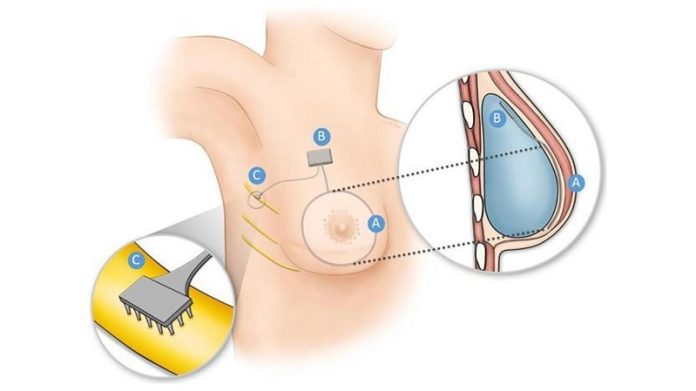
Breast cancer affects millions, and many survivors face tough decisions, like removing one or both breasts through mastectomy.
This surgery often leads to loss of sensation and sexual dysfunction, deeply impacting survivors’ lives. However, a groundbreaking project aims to change this.
The Bionic Breast Project, led by Stacy Tessler Lindau from the University of Chicago, is an innovative venture to help breast cancer survivors regain sensation in their breasts post-surgery.
This project, supported by major funding, is a collaboration between experts in neuroscience, obstetrics, gynecology, and biomedical engineering.
The idea came from a collaboration with neuroscientist Sliman Bensmaia, who, unfortunately, passed away but left a significant impact. His work focused on creating prosthetics that provide a real sense of touch for amputees.
The Bionic Breast project draws inspiration from this, aiming to connect the device to the nerves in the breast area to restore sensation.
The device involves sophisticated technology, connecting to the intercostal nerves with an electrode named C-FINE. It’s designed to send and receive signals, mimicking the natural sensation of touch.
This work is supported by various experts, including Emily Graczyk and Dustin Tyler, experienced in neuroprosthetic devices, and Charles Greenspon, who focuses on different touch sensations.
Rochelle Ackerley, a collaborator from the French National Centre for Scientific Research, brings additional expertise. She’s studying how skin receptors, including those in the breast, respond to touch, aiding in the development of the device.
The process begins with patients undergoing mastectomy. Surgeons implant the C-FINE device, which is then tested for different sensations. The feedback from patients is crucial for fine-tuning the device. During the final reconstructive surgery, the device is removed, ensuring no extra surgical steps are needed.
The project also involves creating a flexible sensor, work led by Sihong Wang. This sensor, designed to be immune system-friendly, will be placed under the nipple and areola.
It responds to touch, pressure, and movement, converting these into electrical outputs to the nerve interface. The aim is to make this sensor as flexible and soft as biological tissue.
Beyond the technological achievement, this project addresses the psychological and sexual wellness of breast cancer survivors.
Lindau’s team is conducting extensive research to understand the concerns of patients regarding breast sensation post-surgery.
This involves developing new methods to communicate effectively with patients about the impact of surgery on sexual function and overall well-being.
A unique aspect of the Bionic Breast Project is the involvement of an advisory board of patients right from the early stages. This ensures the device meets the actual needs of those it’s designed for.
The project brings together a diverse team, including molecular and bioengineers, neuroscientists, gynecologists, oncologists, breast surgeons, and psychologists.
The Bionic Breast Project is more than just a medical advancement; it’s a beacon of hope for breast cancer survivors.
By restoring sensation and addressing sexual dysfunction, it aims to improve the quality of life and self-perception for many women, marking a significant step forward in cancer recovery care.
Follow us on Twitter for more articles about this topic.



